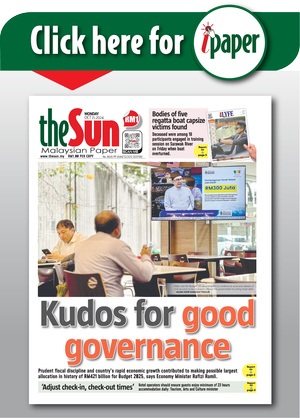KUALA LUMPUR: While the US reciprocal tariffs announced on April 2 have unsettled equity markets and export-driven sectors, property leaders believe the disruption could accelerate the adoption of digital technologies, sustainable construction practices and regional trade integration within Asean’s real estate landscape.
During a panel discussion titled “Industry Countermeasures: Absorbing the Recent US Tariff Shockwaves” at the Asean Real Estate Conference and the Architecture, Interior Design and Building Exhibition 2025, three prominent figures – Real Estate and Housing Developers’ Association (Rehda) president Datuk Ho Han Sang, PropertyGuru Group’s head of real estate intelligence Dr Lee Nai Jia and United Overseas Bank senior Asean economist Enrico Tanuwidjaja – said that while the new US tariffs – which are scheduled to go into effect on Aug 1 – bring short-term uncertainty, they also present potential long-term opportunities for the industry.
Ho said Malaysian developers are bracing for softer demand in industrial, commercial and high-end residential segments as exporters negotiate who will absorb the higher costs.
“Profit margins will be squeezed as importers and exporters split the burden,” he told the audience.
“With higher prices, purchase volumes will drop and investors will be more cautious. Slower sales mean cash flow problems, and cash flow is reality; without it, there is no oxygen.”
Ho noted that while most construction inputs are locally sourced, imported steel, aluminium and glass may see price pressure if the ringgit weakens.
The first sectors to feel the pinch, he said, will be export-driven industries scaling back factory expansions, reducing office space needs, and curbing retail growth.
Yet he also flagged bright spots. “Tariffs on Chinese goods could redirect manufacturing to Asean, and a weaker ringgit may attract buyers from Singapore, Hong Kong and Taiwan into projects like Penang Silicon Island or the Johor‑Singapore Special Economic Zone.”
Lee observed similar patterns across Asean. Using PropertyGuru’s platform data, he described a three‑stage reaction: initial shock, quick normalisation and preference recalibration.
“After the announcement, views on listings in Singapore plunged, while Malaysia and Vietnam saw smaller dips,” he said.
“But people quickly remembered that housing is a long‑term need. What changed is their behaviour where buyers are gravitating towards more affordable, value‑driven homes.”
He highlighted Singapore’s Linton Woods project, which sold 94% of units despite tariffs, thanks to its proximity to transport and employment hubs.
“Integrated developments are resilient,” Lee said. “The key is offering value and convenience.”
He added that confidence in governance, stemming from Vietnam’s policy reforms to Malaysia’s interest rate cuts, continues to underpin the region’s housing markets.
From a macro lens, Tanuwidjaja said the tariffs underline Asean’s need to boost internal trade and reduce dependence on external markets.
“Intra‑Asean trade is only 17%, compared to over 40% in the EU,” he said. “We need to integrate, use local currency settlements, harmonise regulations and build supply chains that loop within the region.”
While describing Asean as “resilient”, he warned that volatility will persist throughout the current US administration: “Businesses must plan for turbulence, not a quick fix. The next midterm election in 2026 is the next real pivot.”
He also urged governments and developers to prepare for technological disruption.
“AI will transform customer service, marketing and operations. We must retrain workers for higher‑skill roles like architecture, design thinking, project integration, because low‑skill roles are most at risk.”
All three panellists stressed innovation as a pathway through the turbulence.
Ho highlighted Integrated Digital Delivery (IDD), a platform that digitally unites 180 industry stakeholders to cut errors and speed approvals, as a game‑changer already deployed in Singapore.
“IDD minimises waste and aligns everyone from engineers to regulators,” he said.
“Speedier approvals, like Penang’s recent 36‑day affordable housing clearance, reduce costs and help projects move despite headwinds.”
Green technology also surfaced as a competitive advantage. Lee pointed to Vietnam’s success in renewable energy during the first trade war.
“This is our chance to lead with climate‑sensitive design and ESG frameworks tailored to Southeast Asia’s climate,” he said.
Looking beyond domestic markets, Ho urged Malaysian developers to revive their overseas promotion campaigns, targeting buyers from Hong Kong, China, and Singapore.
“Our products are internationally recognised and competitively priced by Asean standards,” he said. “With stable governance and award‑winning townships, Malaysia can stand out.”
Tanuwidjaja echoed the sentiment: “The higher tide will lift all boats but only if Asean rows together.”
While uncertainties remain, the panel’s tone shifted from caution to resolve.
The tariffs, they argued, could catalyse Asean’s next phase of growth by forcing integration, accelerating digital tools and prioritising sustainability.
“If you don’t change, you’ll be changed,” Ho said. “This is the moment for our industry to reinvent and emerge stronger.”









